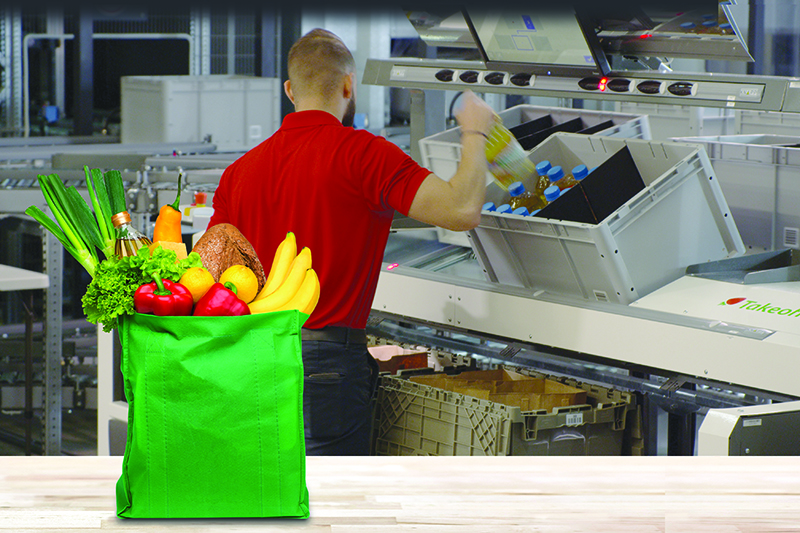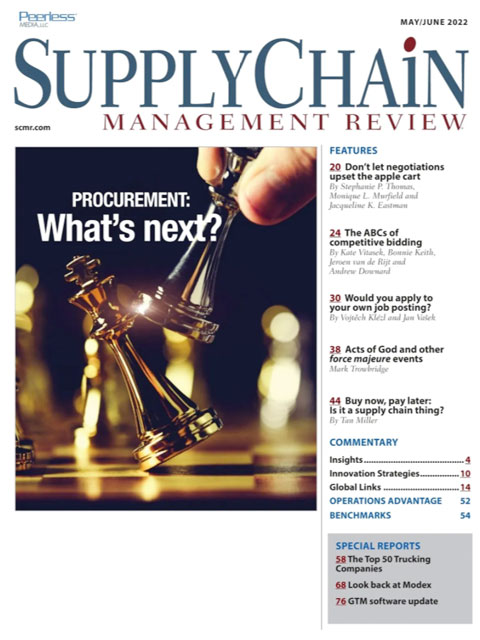Sorry, but your login has failed. Please recheck your login information and resubmit. If your subscription has expired, renew here.
May-June 2022
I recently returned from three days in Atlanta at the Modex trade show. Although advertised as a supply chain event, it’s really a materials handling automation show with a handful of logistics providers thrown in for good measure. Heading out the door to the airport, I had no idea what to expect. The two-year absence from the trade show and conference scene had me, and many of the individuals I spoke to before the show opened, wondering what’s next—not just for the show but for operations in general. If the turnout and the enthusiasm is any indication, I think supply chain is in pretty good shape these days, despite the disruptions we’ve… Browse this issue archive.Need Help? Contact customer service 847-559-7581 More options
Omni-channel supply chains in the retail industry have evolved rapidly over recent years in response to shifting consumer demands. At the same time, the shift toward circular economies is gaining momentum as countries and companies set increasingly ambitious sustainability goals. How can omni-channel support the development of circular supply chains?
One way is to create reverse flow channels that collect returned product and packaging for recycling and reuse. The retail industry is actively developing these reverse supply chains, but one of the challenges they face is how to measure the impact of reuse strategies on omni-channel operations.
Research underway at the MIT Center for Transportation & Logistics’ Circular Supply Chain initiative highlights the importance of establishing key metrics to the future success of reusable packaging strategies in retail. A case study in the grocery business reveals the effectiveness of packaging return systems in improving sustainability performance and the implications for the efficiency of omni-channel retail networks.
Grocery retailer study
Reusable packaging is a vital component of sustainable supply chains. Product packaging uses huge quantities of material resources and is a significant source of municipal and industrial solid waste. For example, it is estimated that in Europe packaging uses 40% of plastics and 50% of paper while contributing 36% of solid municipal waste. Reuse is an obvious way to mitigate this waste, yet most packaging is designed to be disposed of after a single use.

This complete article is available to subscribers only.
Log in now for full access or start your PLUS+ subscription for instant access.
SC
MR
Sorry, but your login has failed. Please recheck your login information and resubmit. If your subscription has expired, renew here.
May-June 2022
I recently returned from three days in Atlanta at the Modex trade show. Although advertised as a supply chain event, it’s really a materials handling automation show with a handful of logistics providers thrown in… Browse this issue archive. Access your online digital edition. Download a PDF file of the May-June 2022 issue.Omni-channel supply chains in the retail industry have evolved rapidly over recent years in response to shifting consumer demands. At the same time, the shift toward circular economies is gaining momentum as countries and companies set increasingly ambitious sustainability goals. How can omni-channel support the development of circular supply chains?
One way is to create reverse flow channels that collect returned product and packaging for recycling and reuse. The retail industry is actively developing these reverse supply chains, but one of the challenges they face is how to measure the impact of reuse strategies on omni-channel operations.
Research underway at the MIT Center for Transportation & Logistics’ Circular Supply Chain initiative highlights the importance of establishing key metrics to the future success of reusable packaging strategies in retail. A case study in the grocery business reveals the effectiveness of packaging return systems in improving sustainability performance and the implications for the efficiency of omni-channel retail networks.
Grocery retailer study
Reusable packaging is a vital component of sustainable supply chains. Product packaging uses huge quantities of material resources and is a significant source of municipal and industrial solid waste. For example, it is estimated that in Europe packaging uses 40% of plastics and 50% of paper while contributing 36% of solid municipal waste. Reuse is an obvious way to mitigate this waste, yet most packaging is designed to be disposed of after a single use.
SC
MR


Latest Supply Chain News
- Aggregators sitting on the throne of Africa’s e-commerce supply chains: What lessons can we learn?
- Cross-border transport 2024: Navigating the surge
- Nine questions are the key to AI success in building resilient supply chains
- 2024 Warehouse/DC Operations Survey: Technology adoption on the rise
- Benchmarking the complexity of ESG reporting
- More News
Latest Podcast

 Explore
Explore
Topics
Procurement & Sourcing News
- Aggregators sitting on the throne of Africa’s e-commerce supply chains: What lessons can we learn?
- Cross-border transport 2024: Navigating the surge
- Benchmarking the complexity of ESG reporting
- Looking back at NextGen 2024
- The Corporate Sustainability Due Diligence Directive
- How to make your CFO a supply chain superfan
- More Procurement & Sourcing
Latest Procurement & Sourcing Resources

Subscribe

Supply Chain Management Review delivers the best industry content.

Editors’ Picks





